Orchid is a delicate flower that requires special care, both on the site and at home. Florists are often surprised by the unwillingness of the flower to blossom and many are trying to make the orchid blossom at home on their own. To understand what to do if the orchid does not bloom and how to make it bloom, you need to understand the features of the care and flowering of this flower. Orchids bloom for a long time, with proper care.
Content
When the flowering time
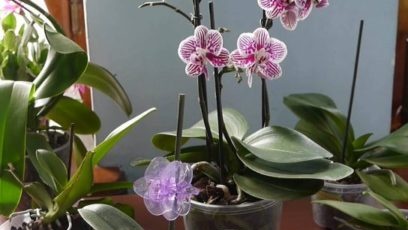 Arrow release time depends on the orchid variety. Features:
Arrow release time depends on the orchid variety. Features:
- The first peduncles are released when the flower reaches the age of 1.5 -3 years. Age is determined by the number of shoots. At the age of 2 years and older, at least 8 new branches appear.
- Flowering lasts 3 months.
- Peduncles appear 2-3 times a year.
If the orchid does not bloom, it is required to provide it with proper care, with timely watering and lighting. To determine whether the orchid is ready for flowering, you need to pay attention to its appearance, roots, leaves. Signs of readiness:
- The roots are strong white or yellow, after watering they become light green. Young become bright green, old pale green. If the roots are darkened, it is worth reducing watering.
- The leaves are green, dense, smooth, with no dried tips. When young leaves appear in the outlet, it means that the orchid has passed during the growing season.
- A healthy seedling once a year issues a green arrow, on which ripened buds appear.
Assessment of cultivation conditions
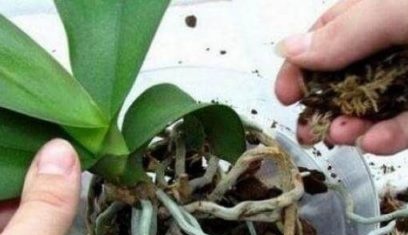 For the orchid to bloom, you need to create special conditions:
For the orchid to bloom, you need to create special conditions:
- Substrate - high-quality soil should consist of particles of sand, agroperlite, pine bark, peat and coconut fiber.
- Fertilizing - you can fertilize a planted plant only with a special composition, with a low nitrogen content and a high phosphorus content. To apply liquid fertilizers before orchid released a flower stalk.
- In terms of lighting, a flower needs a large amount of scattered light - if the rays shine directly on the leaves, they can burn out.
- In summer, orchids bloom at a temperature of + 15- + 30 degrees, and in winter at -20-23 degrees. To maintain the temperature, you can take the plant to the balcony at night.
- Watering should be given special attention - at the beginning of the rainy season, you need to water the orchid carefully, because at this time, roots and leaves begin to develop. Excess moisture should also not be allowed - this will lead to rot.
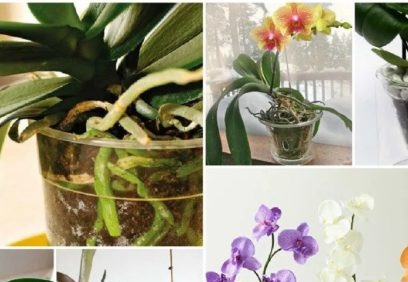 If the roots are rotten, they need to be cut, greased with activated carbon and transplanted into new soil. Phalaenopsis does not bloom due to improper care. The reason may be:
If the roots are rotten, they need to be cut, greased with activated carbon and transplanted into new soil. Phalaenopsis does not bloom due to improper care. The reason may be:
- Waiting for flowering too early (at an early age).
- Incorrect irrigation system.
- Too dry or waterlogged air.
- Stray temperature conditions.
- Lack or oversaturation of light.
- Defeat by pests and diseases or lack of timely treatment.
In order to avoid these problems, it is necessary to conduct a regular inspection of the flower and quickly eliminate the discovered defects, if necessary, feed the orchid.
Do I need to artificially stimulate the plant
In order for the plant to please with bright flowering, it is worth providing him with artificial stimulation of growth. This can be done when the flower is completely healthy, i.e. has a strong rhizome and leaves.
You can make orchids bloom in one of the following ways:
- If for a long time it is not possible to force the orchid to produce a peduncle, you can prepare water heated to 40-45 ° C and leave a flower in it for 30 minutes.
- Another way is a hot shower. The temperature of the water should be pleasant to the hands, so as not to burn the leaves and roots. Water the plant with a very warm shower for several minutes.
- Imitation of drought - transfer the flower to a room with a temperature above 30 degrees, increase the “pause” between watering by 2 times, allowing the roots to dry completely. The flower pot should stand in a warm room for 4-5 days, in some cases 7, if the room is well ventilated.
- It’s like a rainy season - water for such a procedure should have a temperature of 35 degrees, it should be watered for 3-4 days in a row, you can use a shower. After this, watering should be completely stopped, before the roots dry. As soon as they dry, continue watering as usual.
You can feed the orchid with chemicals, which include succinic acid and cytokinin paste.
Why does not give buds and does not grow leaves
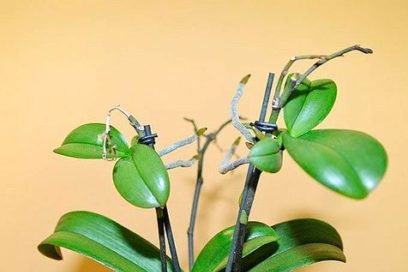 It happens that an orchid does not produce a peduncle and does not bloom for a long time, without giving new leaves and buds. Especially, the Phalaenopsis orchid is so capricious. In this case, so that it blooms, as it should, you can do the following: create all the necessary criteria for the growth and development of a flower.
It happens that an orchid does not produce a peduncle and does not bloom for a long time, without giving new leaves and buds. Especially, the Phalaenopsis orchid is so capricious. In this case, so that it blooms, as it should, you can do the following: create all the necessary criteria for the growth and development of a flower.
Important rules for flowering:
- For flowering, a “suitable age” should come - about 3 years, when the plant has fully grown.
- It is better to grow in a transparent plastic dish - this will provide sufficient lighting.
- Do not transfer the flower from place to place, if necessary, it is better to transfer to a place with good lighting and humidity, so that orchid has not stopped blooming.
- It is not recommended to leave it in a draft, since it will not produce peduncles and will not enter the flowering stage.
- It is recommended to spray the flower from the sprayer regularly.
Observance of all conditions will force the Phalaenopsis orchid to bloom at home.
If the orchid does not bloom, but releases only roots and foliage, most likely it is in a dormant period. This time lasts from 1.5 to 3 months. If only leaves and roots grow, for example, Phalaenopsis varieties, then the flower is better to transfer to a room with lower temperatures.
How to make a phalaenopsis orchid blossom:
- adjust the watering mode;
- transfer to a room with an average level of humidity and temperature;
- if the orchid does not bloom, and only leaves and the root system grow, it will be necessary to create a stressful situation for the development of the peduncle
For an orchid to bloom, it needs a sufficient amount of humidity and lighting.
How to make an orchid blossom
If phalaenopsis does not bloom, then it can be stimulated for primary or repeated growth. Orchids at home should grow in one place. Frequent "moving" can harm her and ruin the released escape. It is better to contain the flower in a container with transparent walls, to improve light nutrition.
What this threatens:- rearrangement of the cellular system of leaves;
- photosynthesis is intensified in the poorly lit part of the leaves, which can also do harm;
- constantly turning the pot will cause the buds to not hatch and the leaves to continue to bloom
It is necessary to take into account the seasonal length of daylight hours. In the autumn-winter period, it is not recommended to allow hypothermia and use LED lamps. Air temperatures day and night should differ by no more than 5 degrees.
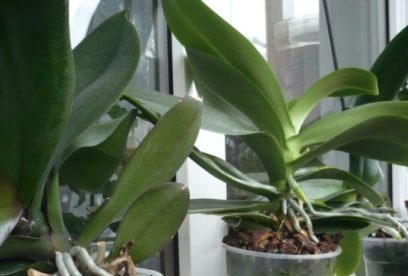 To make the phalaenopsis orchid bloom repeatedly, use mineral fertilizers and water treatments.Feeding is carried out according to the following scheme:
To make the phalaenopsis orchid bloom repeatedly, use mineral fertilizers and water treatments.Feeding is carried out according to the following scheme:
- a tablet of succinic acid is dissolved in 500 ml of water;
- sprayed, and the residue is poured under the root;
- after stressful situations for the flower, Epin is used, they should spray the flower;
- the kidneys can be woken up with a special paste
If the orchid has stopped blooming, it is required to provide it with optimal watering. If there is no flowering, then the watering mode should be changed.
The new irrigation system looks like this:
- remove the flowerpot from the stand;
- lower for 3-5 minutes in a bowl of water;
- let the water drain and put it back on its place.
This procedure must be done so that the orchid blooms. It will help to provoke growth if the roots are spoiled by transplantation. The manipulations made will revive the transplanted plant. They will help when the orchid froze in its native place.
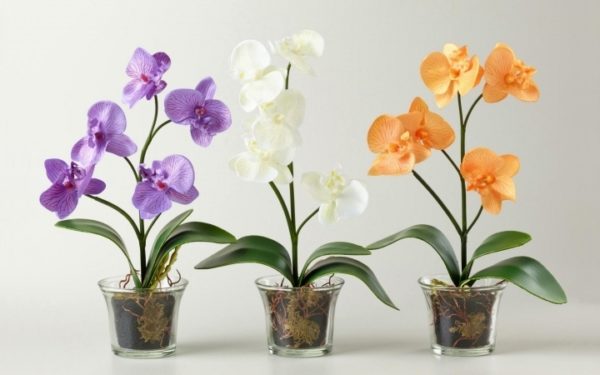 You may be interested in:
You may be interested in:When the orchid does not bloom after transplanting, then after such watering, the flowers will certainly bloom. Orchid is important sunlight. An orchid blooms at home well, if you give the flower lighting. In this case, it should be borne in mind that it is not recommended to put pots on the southern window sills, otherwise, you can burn the foliage. For a good photosynthesis cycle, at night, the flower is left in the dark.
Ensuring proper lighting:
- using phytolamps;
- conventional fluorescent lamps covered with foil;
- choosing the right window.
In order for the orchid to bloom all year round, it must be lit at least 10-12 hours a day. For safety, when using lamps, you can set the timer to turn on and off at the exact time. Windows should not be blown.
Orchid amazes gardeners with its luxury and an abundance of colors. The complexity of care and the pet's moodiness does not reduce its popularity among summer residents. Feeding rich in vitamins and minerals will protect against attacks of diseases and pests, and watering and sunlight will make it possible to decorate any window, garden bed or flower bed.

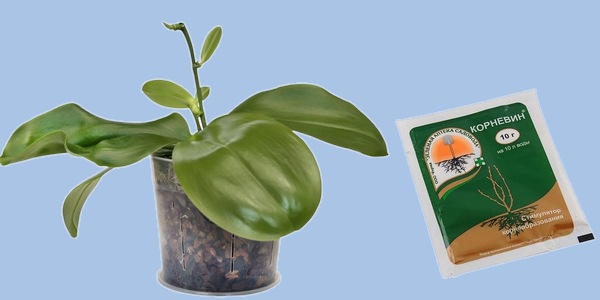
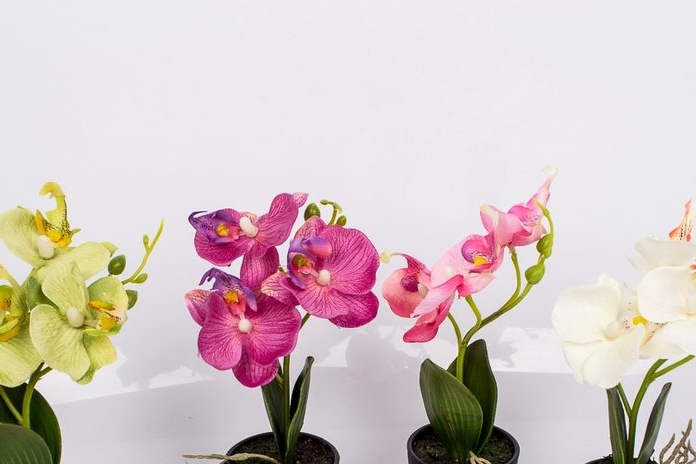
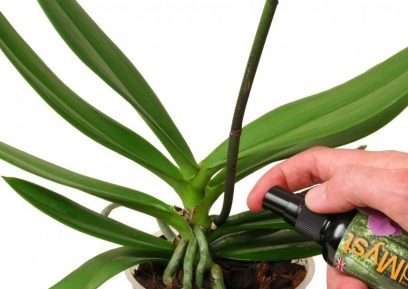
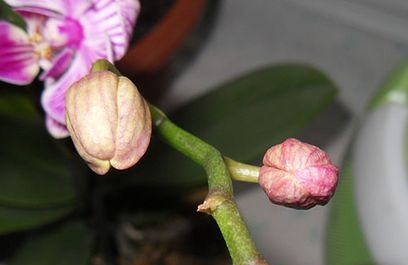 Reasons why orchids fall flowers and what to do
Reasons why orchids fall flowers and what to do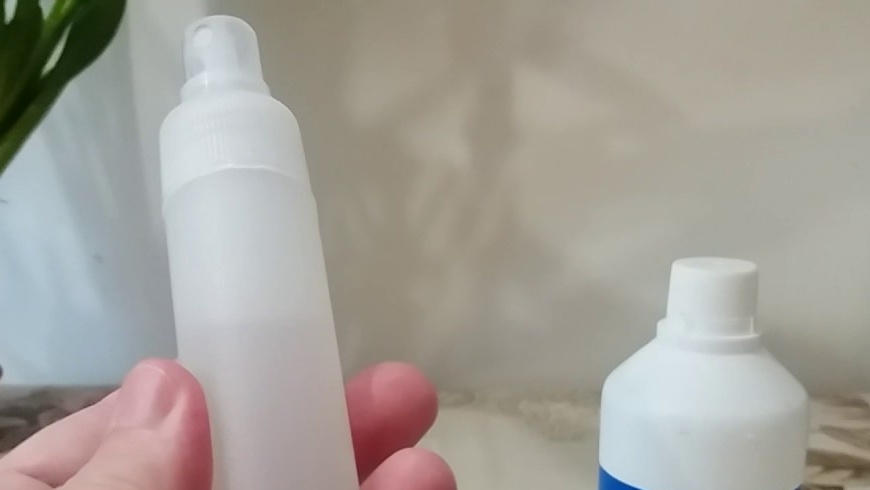 How to use hydrogen peroxide for orchids and why
How to use hydrogen peroxide for orchids and why Midges are wound up in the orchid: effective ways to get rid
Midges are wound up in the orchid: effective ways to get rid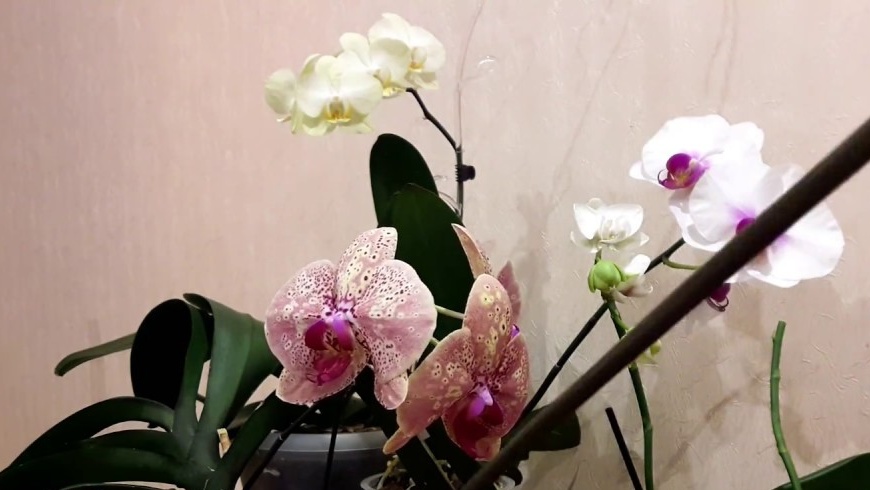 Is it possible to transplant an orchid during flowering
Is it possible to transplant an orchid during flowering